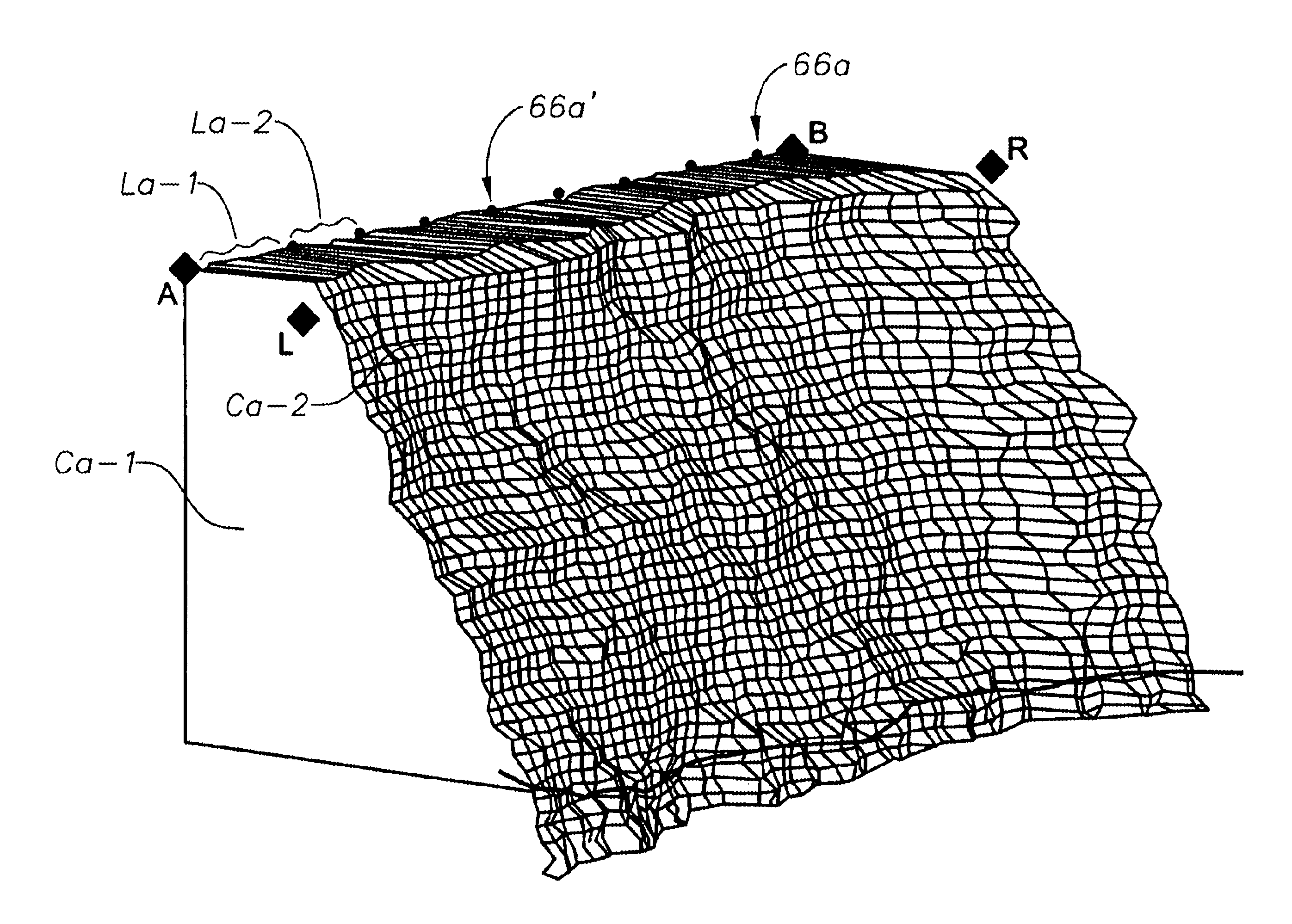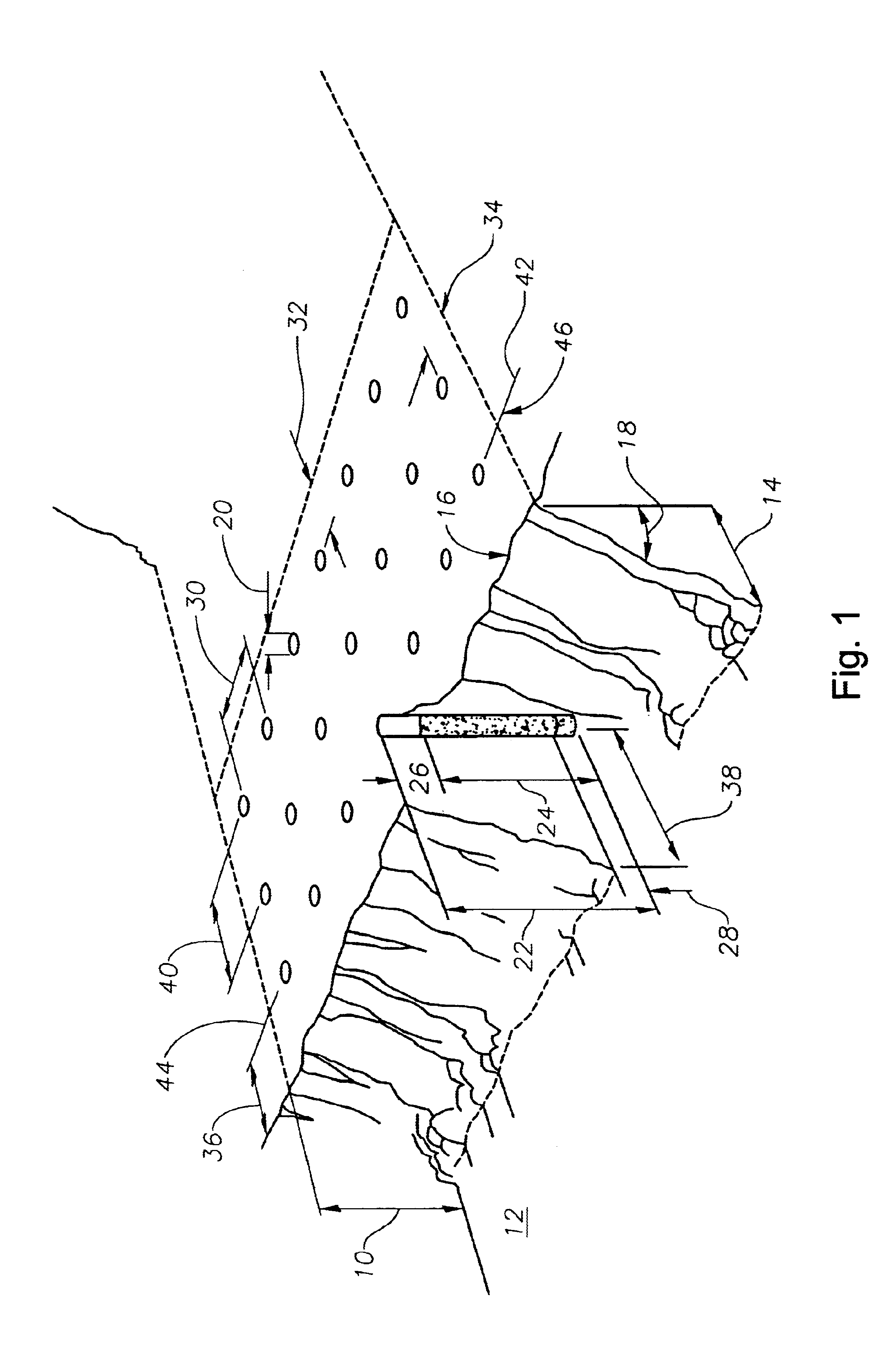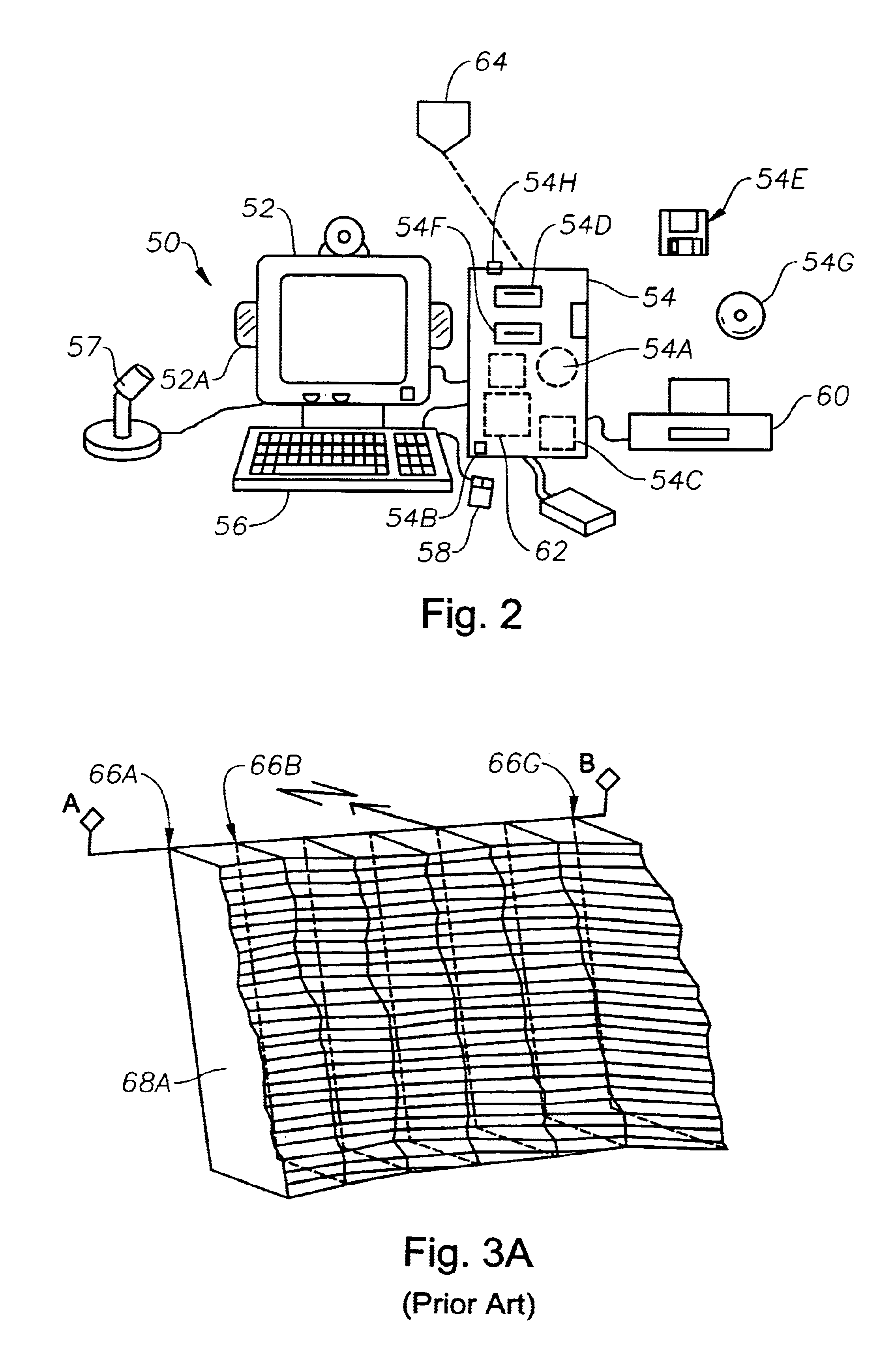Blasting method
- Summary
- Abstract
- Description
- Claims
- Application Information
AI Technical Summary
Problems solved by technology
Method used
Image
Examples
example 1
Prior Art
In a typical prior art procedure alluded to above, a rock face is surveyed using laser rangefinding equipment such as the commercially available QUARRYMAN.RTM. device. Next, rock face profiling software such as FACE 3-D.RTM. software available from Blast Design International, Inc. or a similar software program can be used to produce a three-dimensional model of the rock face, from which isometric, plan and cross-sectional views may be constructed. FIG. 3A shows the computer model of the rock face in front of a planned drill line A-B as generated by the FACE 3-D.RTM. software.
Once the rock face has been surveyed, the computer model generated by the software may be used to evaluate borehole positions, spacings, angles, and to calculate the explosive energy distribution throughout the rock mass on a hole-by-hole basis for specified explosives. In a particular example, a drill line A-B indicated in FIG. 3A and a series of seven boreholes 66a, 66b, . . . 66g along the drill line...
example 2a
One example of a procedure in accordance with the present invention may be based on the following blasting site characteristics:
Face Height (FH) at start point=80 feet
Desired Stem Height (SH)=10 feet
Subdrilling (SD)=5 feet
Bore Hole diameter (d)=6.5 inches (16.5 centimeters (cm))
Explosive=ANFO
(Density (ANFO) (.rho..sub.EXP)=0.82 g / cm.sup.3 ; Specific Energy (ANFO)=880 cal / g)
Desired MF=3 tons rock per pound ANFO
Rock density (.rho..sub.R)=2.25 tons / yd.sup.3
The optimum positions for boreholes along a selected drill line to achieve proper fragmentation are determined as follows, with reference to FIG. 3B, which represents a portion of the same bench shown in FIG. 3A.
1. The bench, including the rock face, is electronically surveyed and modeled, preferably with optional discount for the presence of residual debris ("muck") that may have been interpreted as solid rock. When modeling is done by digital surveying methods, e.g., by use of the QUARRYMAN.RTM. system, the muck can be discounted f...
example 2b
An alternative procedure, described herein with reference to FIG. 3B, follows the steps of Example 2A except that instead of steps 7, 8 and 9 of Example 2A, the following steps 7', 8' and 9' are preferred:
7'. The length of the hypothetical borehole and the hypothetical volume of explosive therein are revised based on the average of the heights of the defined cross sections, and the target rock burden B.sub.T is recalculated, based on the revised hypothetical borehole height and desired MF.
8'. The mass of rock in the layer is added to all previously defined layers defined from the start point (if any) and the accumulated rock mass is compared to the target rock burden.
9'. If the accumulated rock mass is less than the revised B.sub.T, another cross section and layer are defined and steps 6, 7' and 8' are repeated. In this way, the length and volume of the hypothetical borehole and the associated target rock burden are up-dated on an iterative basis based on the average heights of all ...
PUM
 Login to View More
Login to View More Abstract
Description
Claims
Application Information
 Login to View More
Login to View More - R&D
- Intellectual Property
- Life Sciences
- Materials
- Tech Scout
- Unparalleled Data Quality
- Higher Quality Content
- 60% Fewer Hallucinations
Browse by: Latest US Patents, China's latest patents, Technical Efficacy Thesaurus, Application Domain, Technology Topic, Popular Technical Reports.
© 2025 PatSnap. All rights reserved.Legal|Privacy policy|Modern Slavery Act Transparency Statement|Sitemap|About US| Contact US: help@patsnap.com



